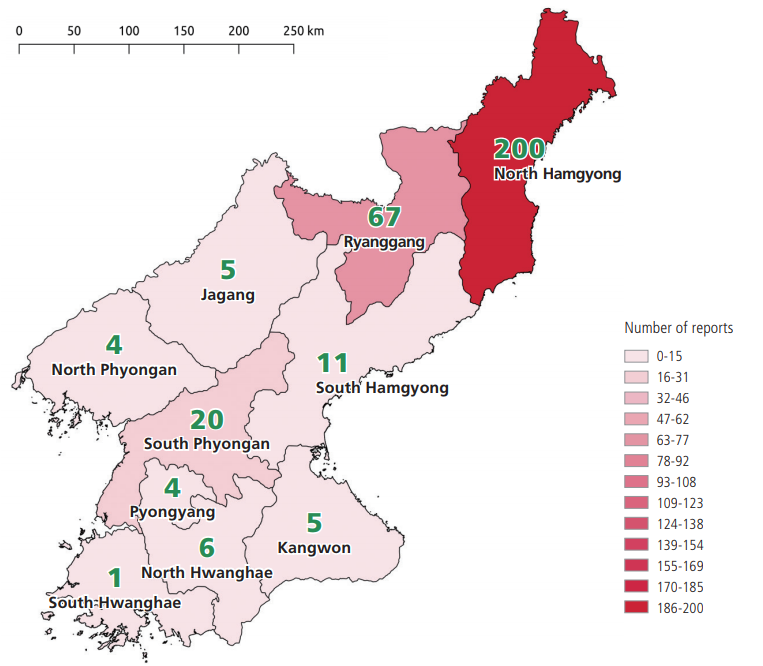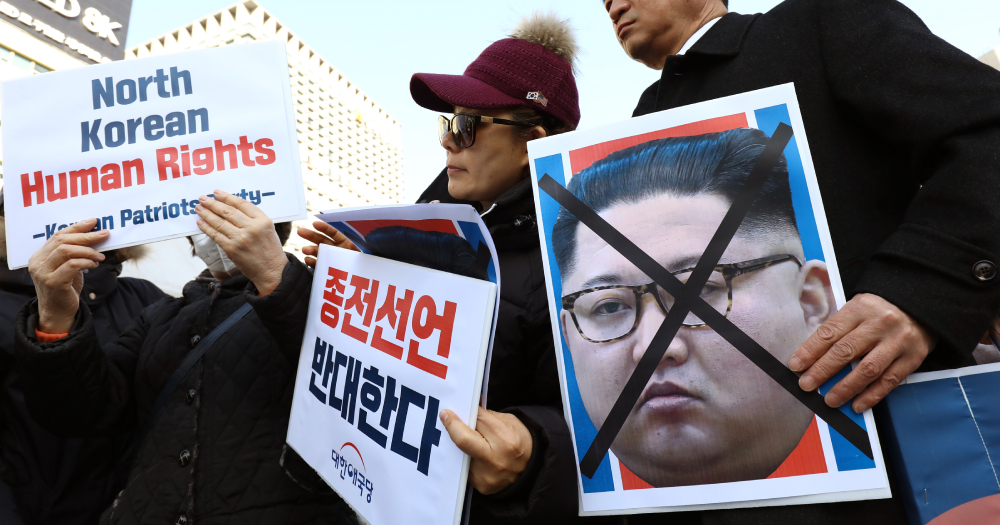North Korea carries out public executions to provoke fear among the public in order to maintain control, a South Korean rights group said in a report published on Tuesday, June 11.
The practice has been passed down in the ruling dictatorial Kim family for three generations, starting from Kim Il-sung, the grandfather of current North Korean leader Kim Jong-un.
Report took four years to complete
The report, "Mapping the Fate of the Dead: Killings and Burials in North Korea", was put together by Seoul-based non-governmental organisation Transitional Justice Working Group (TJWG).
One of TJWG's sponsors is Washington-based National Democratic Institute, which is itself partly funded by the U.S. State Department.
It was based on four years of research and interviews with 610 North Korean defectors, TJWG claimed.
As it takes years for a defector to make his or her way to South Korea, the most recent report of an execution dates back to 2015.
TJWG is made up of human rights advocates and researchers from five countries, including South Korea, Germany, and the U.S.
Instilling fear in the North Koreans
Sarah Son, research director of TJWG, said the North Korean regime uses public executions to maintain control over its people.
They do this by:
- Instilling a sense of fear among ordinary people, and;
- Reminding the North Korean people of particular policy positions the Kim Jong-un regime has, such as certain crimes cannot be tolerated.
323 execution sites
The researchers recorded 323 reports of killing sites from "high information source types" (from first- or second-hand accounts), complete with geographical coordinates.
 North Hamgyong is the province closest to China, which gives potential defectors the greatest access to the Chinese border. (Image via TJWG's report)
North Hamgyong is the province closest to China, which gives potential defectors the greatest access to the Chinese border. (Image via TJWG's report)
Common execution sites include riverbanks, fields and other open spaces.
Public executions of more than 10 people at the same time were reported to have occurred 19 times.
Commonly cited crimes
The death penalty is carried out in North Korea mostly by public executions, said the report.
The most commonly cited offences for the death penalty include the following (in descending order):
- Murder or attempted murder.
- Stealing copper (usually wire).
- Human trafficking.
- Stealing cows and other kinds of property, including food.
- Economic crimes.
The report noted that due to the lack of due process in the prosecution of the alleged crimes, it is difficult to know if the charges announced at an execution matched the act committed by the accused.
Here are some other findings in the report.
Most North Koreans have seen public executions
Of a sample of the interviewees, 83 percent had witnessed a public execution in their lifetime, while 53 percent were forced by the authorities to watch an execution on one or more occasions.
The report also pointed out that the sample of interviewees was not necessarily representative of the North Korean population.
Crowds that consisted of hundreds of people, sometimes 1,000 or more, would watch the proceedings.
The youngest age an interviewee reported witnessing a public execution was seven years old.
It was not mentioned how common such executions are, nor did it say they were taking place more or less frequently.
Some interviewees also said there were times when those carrying out the executions appeared to be drunk.
One interviewee said "this is because killing is a hard thing to do emotionally".
Fake trial
While brief "trials" almost always take place on the spot, immediately before a public execution, a sentence is simply given without legal counsel for the accused.
The report also claimed the accused often appeared "half dead" when brought to the execution site.
Mobile phones confiscated from witnesses
Recent defectors also said North Korean police use airport-style metal detectors to find and confiscate mobile phones held by witnesses at public executions so they could not record the proceedings.
This suggests the Kim regime is concerned about leaked information on public executions.
The witnesses could reclaim their phones after the execution.
While not everyone in North Korea owns a mobile phone, almost 20 percent of the 25 million population reportedly have one.
Family members not allowed to collect remains
A defector claimed that from 1985 to the mid-1990s in Pyongyang, one or two persons would be executed publicly every Sunday.
The killings were mostly carried out by firing squad, and occasionally by hanging.
While the families of the deceased would often be present at the site, they were usually not allowed to collect their remains afterwards, nor were the burial locations revealed to the families.
Not knowing the location of a family member after their execution, and not being able to give them a proper burial, violate cultural norms, said Son.
Also, an interviewee gave an account of how the wife of a man about to be executed was forced by the authorities to shout at her husband while he waited to be shot:
"You bastard! How dare you betray this country?"
One of few countries which conduct public executions
Along with Iran, Saudi Arabia and Somalia, North Korea is one of the few countries in the world that continue to conduct public executions.
According to Los Angeles Times, North Korea previously admitted to the United Nations that it carries out public executions, but "only in exceptional cases, where the crime committed was exceptionally grave".
Highly secretive state
Recently, South Korean media, Chosun Ilbo, reported an alleged purge of the top brass in North Korean for the collapse of the Hanoi Summit with the U.S.
The summit had ended prematurely without a signed joint statement nor any concrete agreements.
However, a photograph of a senior official said to have been sent to prison camp -- where inmates are forced to perform physical work such as mining and logging -- was later published by North Korean state media KCNA on June 3.
He was seen among the top officials accompanying Kim at an art performance.
Kim's sister and close confidante, Kim Yo-jong, also appeared in one of the published photographs, clapping while seated next to her sister-in-law, Ri Sol-ju.
The South Korean media had previously speculated that Kim had ordered his sister to lay low following the breakdown in talks with Washington.
Given Pyongyang's tight control of information, it is extremely difficult to track developments among North Korea's ruling elite, making false reports from the South Korean government and media possible.
Top image via Chung Sung-Jun/Getty Images
If you like what you read, follow us on Facebook, Instagram, Twitter and Telegram to get the latest updates.
